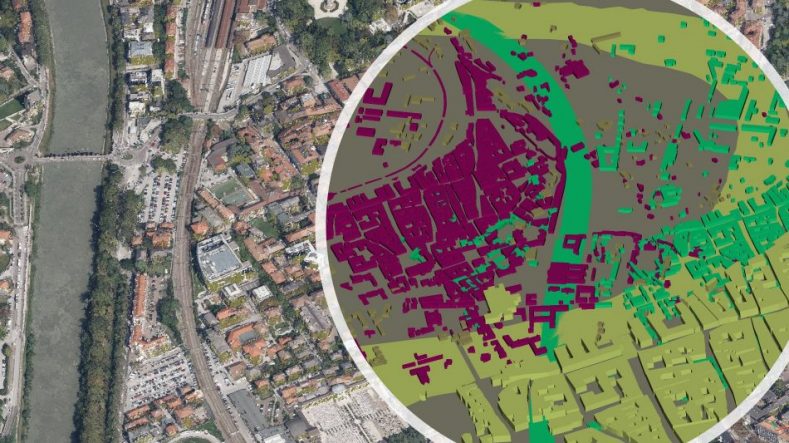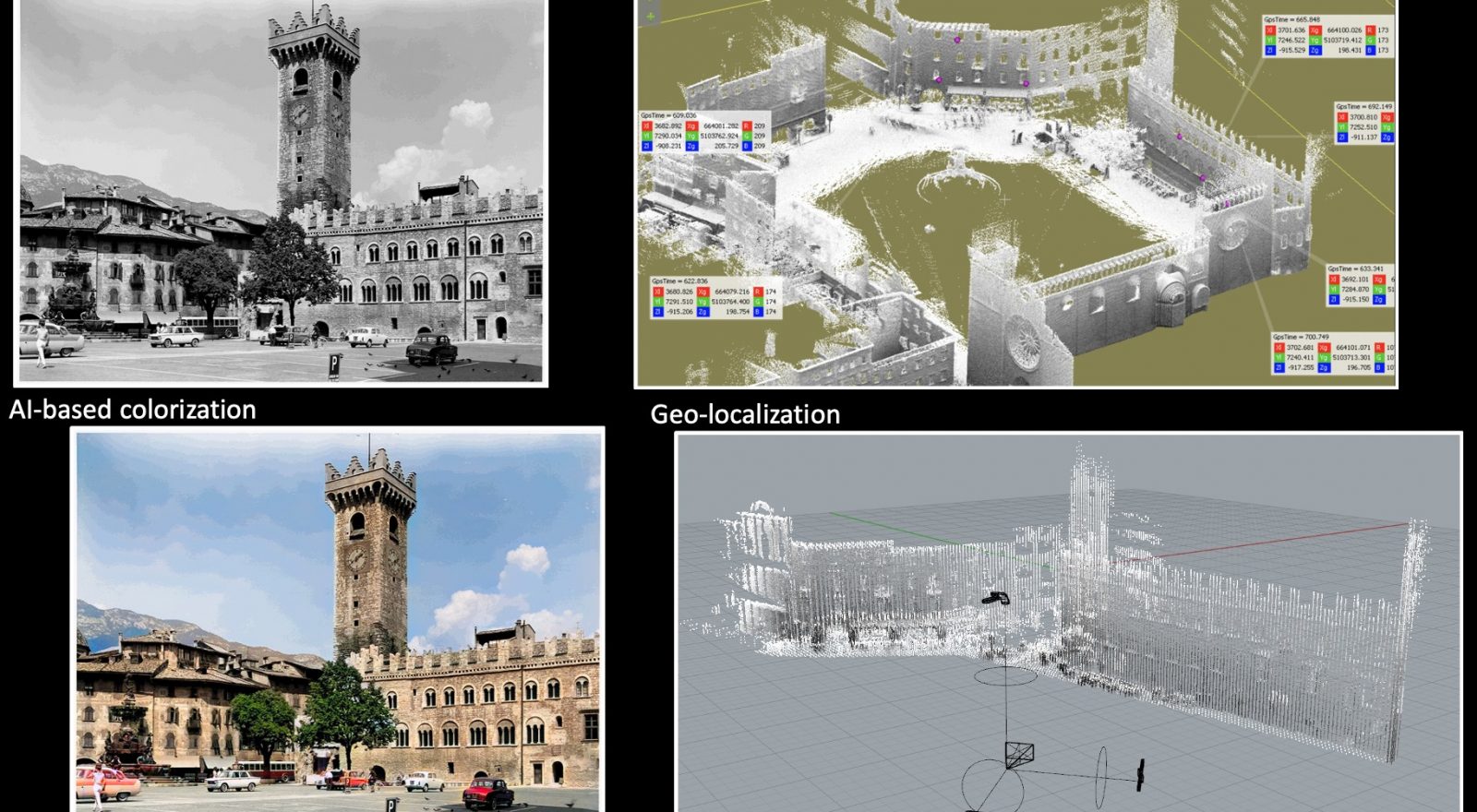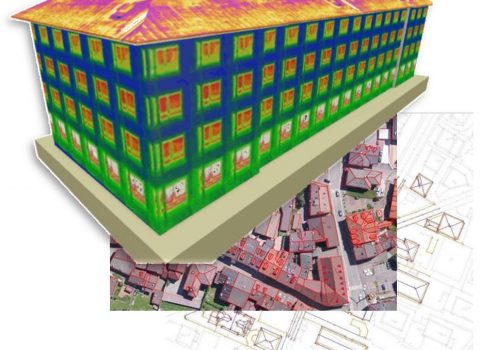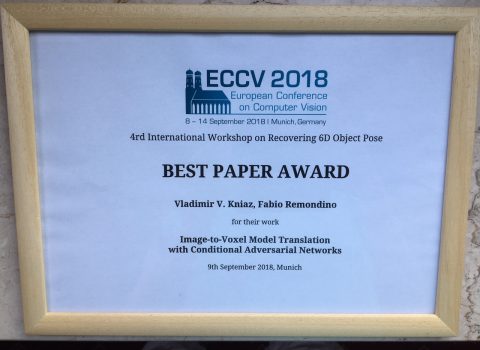
TOTEM – 4D Trento Time Machine
ICT technologies, archive data, space-time analyses of the urban area, apps and Artificial Intelligence to enhance Trento, its history and its archives
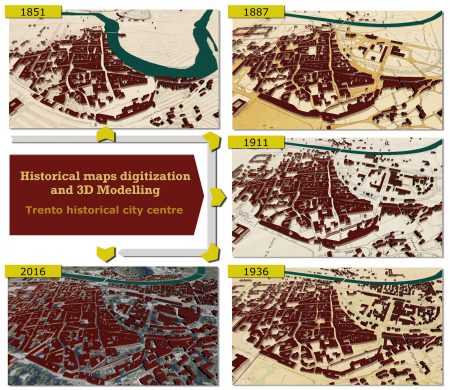
Imagine exploring the historic district of a city with its buildings and monuments.
What if you could navigate in time and see the transformations of the city, how much green has been lost or how the buildings or squares have changed their intended use?
What if you could use your smartphone to view archival images or discover historic buildings, reviving history like a time machine?
What if you could virtually see the historic district old canals or where the river once flowed or the level water reached in the city during a flood?
Advanced ICT technologies and cultural heritage come together In the TOTEM project, funded by the Cassa di Risparmio di Trento and Rovereto (CARITRO), to make cultural heritage even more interesting and accessible to a wider public, enhancing the local area and its archives.
TOTEM is an interdisciplinary project that will involve the 3DOM research unit with one of its young researchers, together with software developers, humanists, archivists, cartographers and urban planners. The aim is to investigate and develop solutions that wiill integrate heterogeneous data from historical archives, with semantic and three-dimensional (3D) models of the city, adding a time component (4D).
The ultimate goal of TOTEM is to enable different types of users (researchers, archivists, tourists, residents, etc.) to access historical contents, via a browser or smartphone, including augmented reality solutions.
TOTEM will contribute to increase the historical, architectural and urban planning knowledge of Trento, thanks to geo-spatial analysis, the use of Artificial Intelligence for the multi-temporal modeling of historical maps and the enhancement of materials and data kept in the local archives.
As in a “time machine”, it will be possible to relive and take a virtual tour of the Trento of the past, from the mid-19th century to the present day, admiring the ancient appearance of the buildings, interpreting its history through the transformations, observing the path of the river Adige in the period preceding the straightening of 1858, seeing in some school buildings the old Austrian barracks or in Torre Verde the river port. It will be possible to analyze the ratio green / built-up in the city, understand the different uses of the spaces over time, understand how the river has shaped the urban and road system, observe the water level in the city during the 1966 flood and much more.
The project will be conducted in cooperation with various partners in the area who will contribute data and knowledge useful for carrying out research and development activities, photographic, cartographic and documentary collections of Trento from 1850 to the present day.
